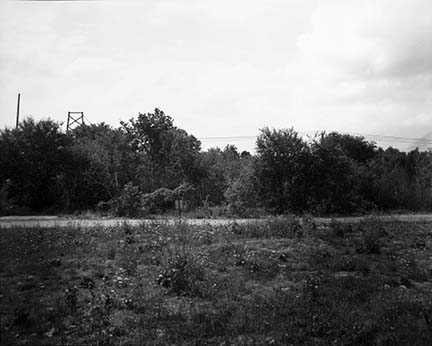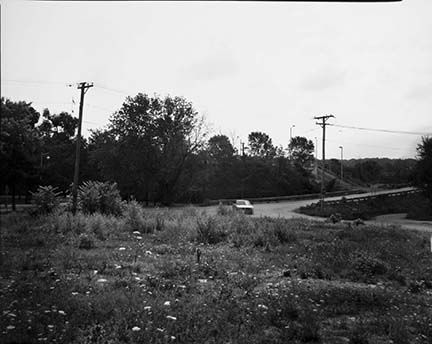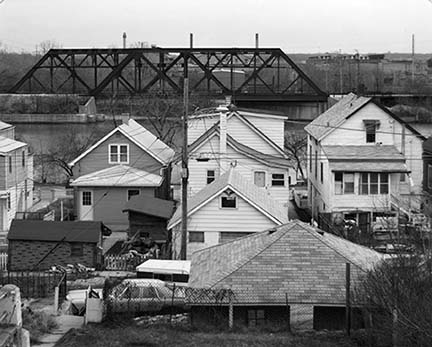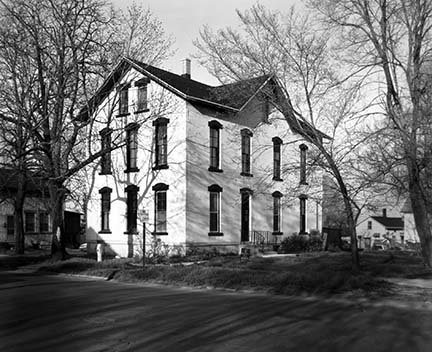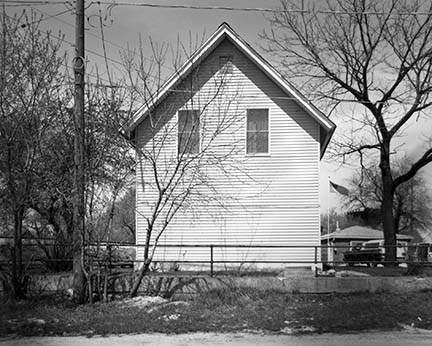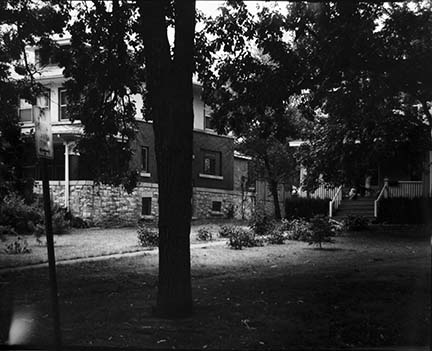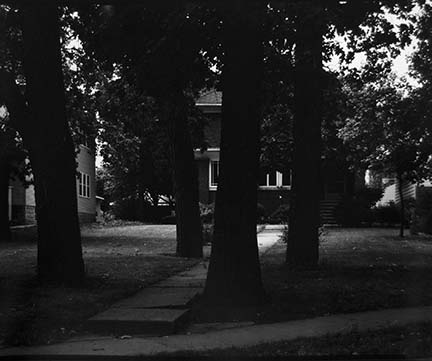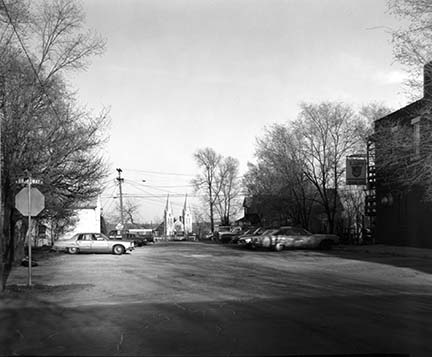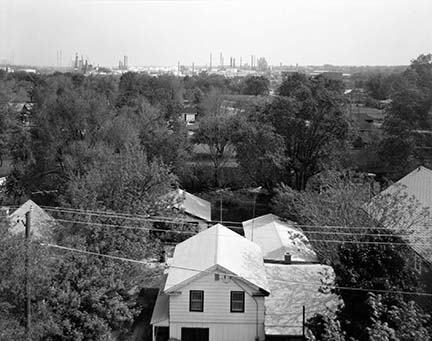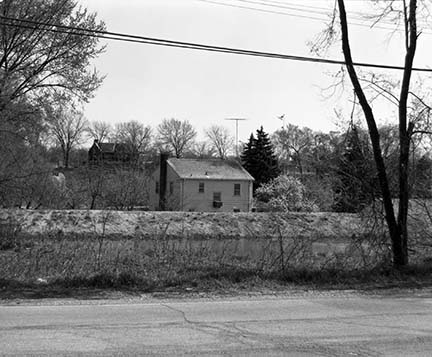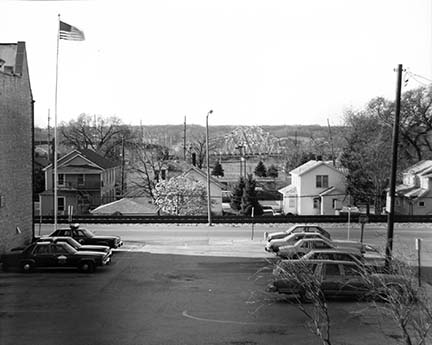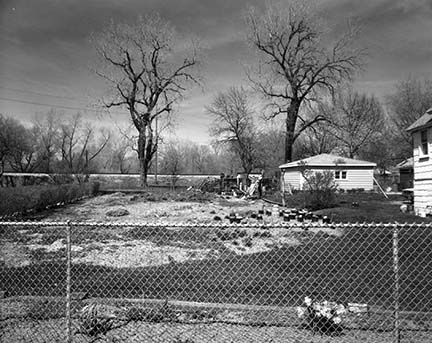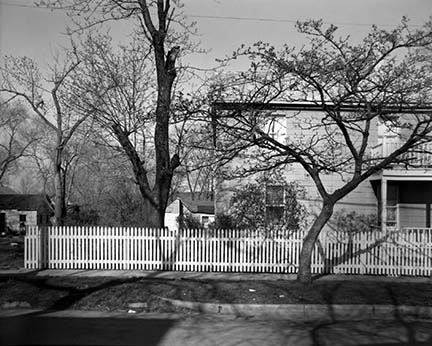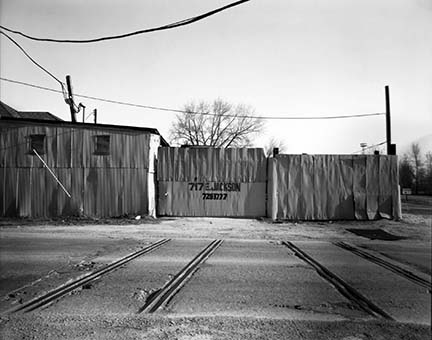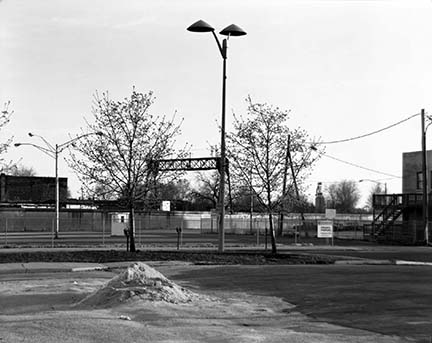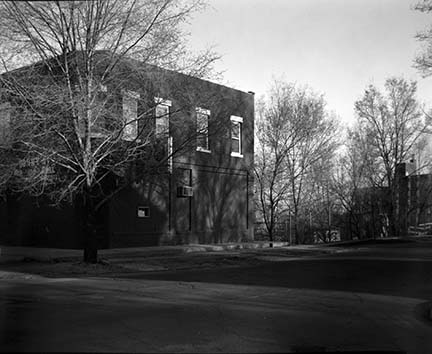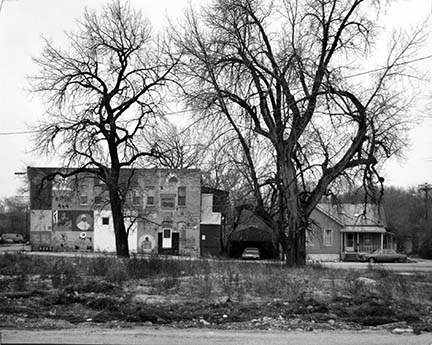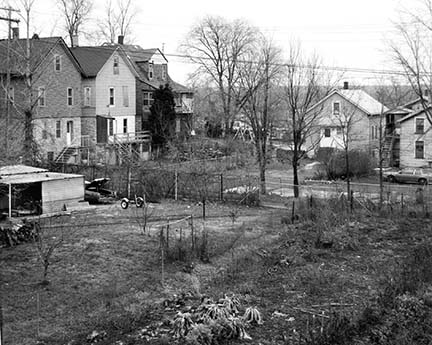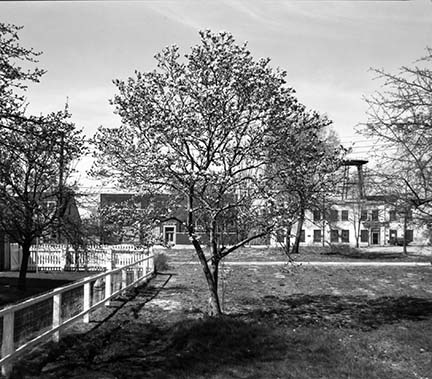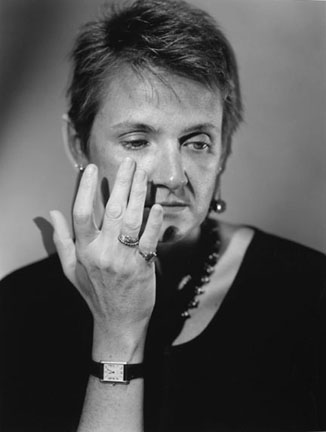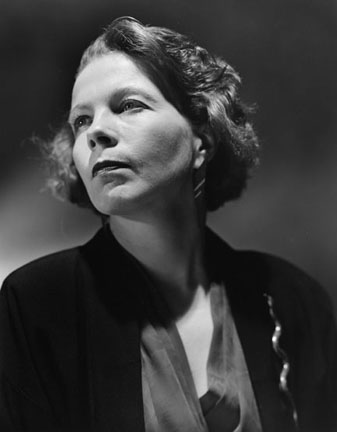About the Photographer
McKinney, Rhondal
American, b. 1948
In 1987-1988, for the Changing Chicago documentary project, Rhondal McKinney photographed towns on the southern outskirts of Chicago, along the historic Illinois and Michigan Canal. Through the end of the nineteenth century towns like Lockport and Joliet were thriving transportation hubs, since the nearby canal served as a vital link to commercial centers on the East Coast via the Great Lakes and the St. Lawrence Seaway. McKinney's 8x10 contact prints provide detailed, intimately scaled views of the area after decades of economic downturn. Many of the modest homes and neighborhoods McKinney documents are situated next to railroad tracks and in view of factory smokestacks. The pictures contain allusions to the industries that initially fueled the towns' growth, but the area appears desolate and quiet. McKinney's interest in these towns was not solely centered on their history in a bygone era, but on how these towns might develop. At the time of the photographs' publication, McKinney noted how the area was becoming more ethnically diverse, following multiple waves of immigration, and he described his hope to connect with "the spirit of these people, their traditions, and their efforts" in his photographs.
In the midst of an epidemic of family farm foreclosures in 1985 the Focus Infinity Fund sponsored Rhondal McKinney, Tom Arndt, and Archie Lieberman to photograph small farms in the Midwest for the documentary project Farm Families. McKinney's photographs portray the farmers and their families in a series of panoramic portraits, each created by joining three to five contact prints made from 8x10 negatives. Collectively, the fragmented panoramas accentuate the expansive space that characterize these farmlands, but McKinney uses the multiple negatives to compartmentalize different parts of the image. In many of the photographs he situates the family in the central frame of the panorama, composing what could stand on its own as a tightly framed portrait. The adjacent negatives depict the land as it spreads out around them, views of wide open fields or an extensive yard around a two-story house. Each frame of the panorama is enclosed by a black border though, creating internal divisions within the compiled image and effectively cutting off the subjects from their surroundings. At the broadest level McKinney's project created a record of family farms at a time when their future seemed uncertain, while the way he uses multiple negatives to divide up the space, suggests the looming threat of losing one's land.
Rhondal McKinney received an MFA in Photography from the University of Illinois (1981). He has had solo exhibitions at the Art Institute of Chicago; Roanoke College, Roanoke Virginia; University of Nebraska-Lincoln, and other institutions. His photographs are held in the permanent collections of the Metropolitan Museum of Art, New York; Art Institute of Chicago; and the San Francisco Museum of Modern Art. McKinney co-curated the 1983 exhibition An Open Land: Photographs of the Midwest: 1852-1982 at the Art Institute of Chicago, along with the museum's Curator of Photography, David Travis. Since 1983 McKinney has taught at Illinois State University, where he also serves as the director of the Rural Documentary Collection, an archive of photographs depicting social conditions in the rural Midwest.

